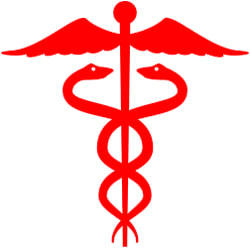DIABETES IS ACTUALLY FIVE SEPARATE DISEASES.
Scientists say diabetes is five separate diseases, and treatment could be tailored each form.
Diabetes - or uncontrolled blood sugar levels- is normally split into type 1 and type 2.
Finnish and Swedish researchers think it's more complicated than otherwise thought. this finding, they say will usher in a more personalised form of treatment Diabetes affects one in eleven adults worldwide.increasing the risk of heart attack, stroke , blindness, kidney failure and amputation.
Type 1 diabetes is a disease of the immune system which affects 10 % of individuals. it errantly attacks the body's insulin factories(beta-cells) so there's not enough of the hormone to control blood sugar levels.
Type 2 diabetes on the other hand, is largely seen as a disease of poor lifestyle as body fat can affect the way insulin works.
The findings are as follows:
CLUSTER 1- severe autoimmune diabetes is broadly the same as the classified type 1- it hits people when they were very young , seemingly healthy and immune disease left them unable to produce insulin.
CLUSTER 2 - severe insulin- deficient diabetes patients - initially looked very similar to those of cluster 1- they were young, had healthy weight and struggled to make insulin, but the immune system was not at fault.
CLUSTER 3- severe insulin- resistant diabetes - patients were generally overweight and making insulin but their body was no longer responding to it
CLUSTER 4- mild obesity-related diabetes - was mainly seen in people who were very overweight but metabolically much closer to normal than those in cluster 3.
CLUSTER 5- mild age related diabetes - patients developed symptoms when they were significantly older than in other groups and their diseases tended to be milder
Cluster 2 patients would be classified as type 2 as they do not have an autoimmune disease but, these patients have a greater risk of blindness.
Cluster 3 patients had the greatest risk of kidney disease so, some clusters may benefit from enhanced screening.
This research takes a promising step towards breaking down type 2 diabetes, according to Dr, Emily Burns. She further added that researchers still need to know more about subtypes before they can understand what this means for people suffering with diabetes.
Source BBC Health (March 2, 2018)
Scientists say diabetes is five separate diseases, and treatment could be tailored each form.
Diabetes - or uncontrolled blood sugar levels- is normally split into type 1 and type 2.
Finnish and Swedish researchers think it's more complicated than otherwise thought. this finding, they say will usher in a more personalised form of treatment Diabetes affects one in eleven adults worldwide.increasing the risk of heart attack, stroke , blindness, kidney failure and amputation.
Type 1 diabetes is a disease of the immune system which affects 10 % of individuals. it errantly attacks the body's insulin factories(beta-cells) so there's not enough of the hormone to control blood sugar levels.
Type 2 diabetes on the other hand, is largely seen as a disease of poor lifestyle as body fat can affect the way insulin works.
The findings are as follows:
CLUSTER 1- severe autoimmune diabetes is broadly the same as the classified type 1- it hits people when they were very young , seemingly healthy and immune disease left them unable to produce insulin.
CLUSTER 2 - severe insulin- deficient diabetes patients - initially looked very similar to those of cluster 1- they were young, had healthy weight and struggled to make insulin, but the immune system was not at fault.
CLUSTER 3- severe insulin- resistant diabetes - patients were generally overweight and making insulin but their body was no longer responding to it
CLUSTER 4- mild obesity-related diabetes - was mainly seen in people who were very overweight but metabolically much closer to normal than those in cluster 3.
CLUSTER 5- mild age related diabetes - patients developed symptoms when they were significantly older than in other groups and their diseases tended to be milder
Cluster 2 patients would be classified as type 2 as they do not have an autoimmune disease but, these patients have a greater risk of blindness.
Cluster 3 patients had the greatest risk of kidney disease so, some clusters may benefit from enhanced screening.
This research takes a promising step towards breaking down type 2 diabetes, according to Dr, Emily Burns. She further added that researchers still need to know more about subtypes before they can understand what this means for people suffering with diabetes.
Source BBC Health (March 2, 2018)
